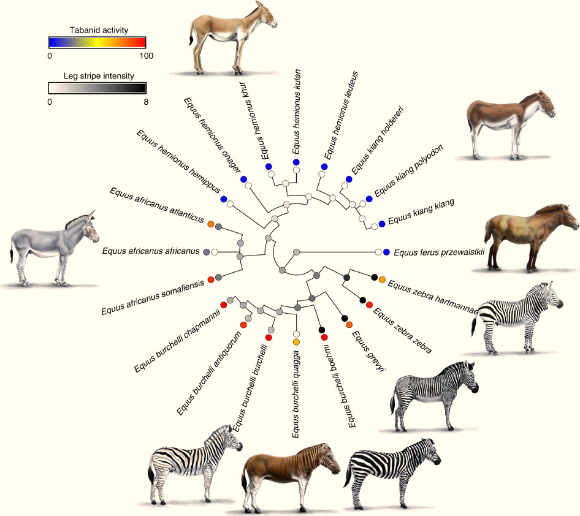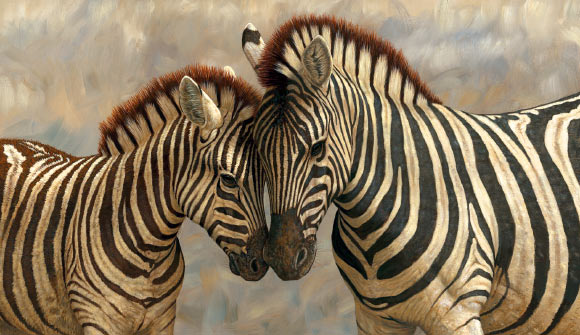According to a team of researchers led by Prof Tim Caro from the University of California at Davis, zebra’s stripes stave off biting flies, including horseflies and tsetse flies.
Experimental work had previously shown that such flies tend to avoid black-and-white striped surfaces, but many hypotheses for zebra stripes have been proposed since Alfred Russel Wallace and Charles Darwin debated the problem 120 years ago. These include: a form of camouflage; disrupting predatory attack by visually confusing carnivores; a mechanism of heat management; a social function; avoiding ectoparasite attack, such as from biting flies.
Prof Caro and his colleagues mapped the geographic distributions of the seven different species of zebras, horses and asses, and of their subspecies, noting the thickness, locations, and intensity of their stripes on several parts of their bodies.
They then compared these animals’ geographic ranges with different variables, including woodland areas, ranges of large predators, temperature, and the geographic distribution of tsetse flies and horseflies. They also examined where the striped animals and these variables overlapped.
After analyzing the five hypotheses, the scientists ruled out all but one: avoiding blood-sucking flies.
“I was amazed by our results. Again and again, there was greater striping on areas of the body in those parts of the world where there was more annoyance from biting flies,” said Prof Caro, who is the first author of the paper published in the journal Nature Communications.

Striping and horseflies activity. Phylogenetic tree of equid subspecies showing leg stripe intensity, inside circles, and proportion of geographic range overlap with 7 consecutive months of temperature lying between 15 and 30 degrees Celsius and humidity between 30 and 85 per cent, outside circles. Drawings by Rickesh Patel.
While the distribution of tsetse flies in Africa is well known, the researchers did not have maps of tabanids (horseflies, deer flies).
Instead, they mapped locations of the best breeding conditions for tabanids, creating an environmental proxy for their distributions.
They found that striping is highly associated with several consecutive months of ideal conditions for tabanid reproduction.
Why would zebras evolve to have stripes whereas other hooved mammals did not? The study found that, unlike other African hooved mammals living in the same areas as zebras, zebra hair is shorter than the mouthpart length of biting flies, so zebras may be particularly susceptible to annoyance by biting flies.
“No one knew why zebras have such striking coloration. But solving evolutionary conundrums increases our knowledge of the natural world and may spark greater commitment to conserving it,” Prof Caro said.
______
Tim Caro et al. 2014. The function of zebra stripes. Nature Communications 5, article number: 3535; doi: 10.1038/ncomms4535








